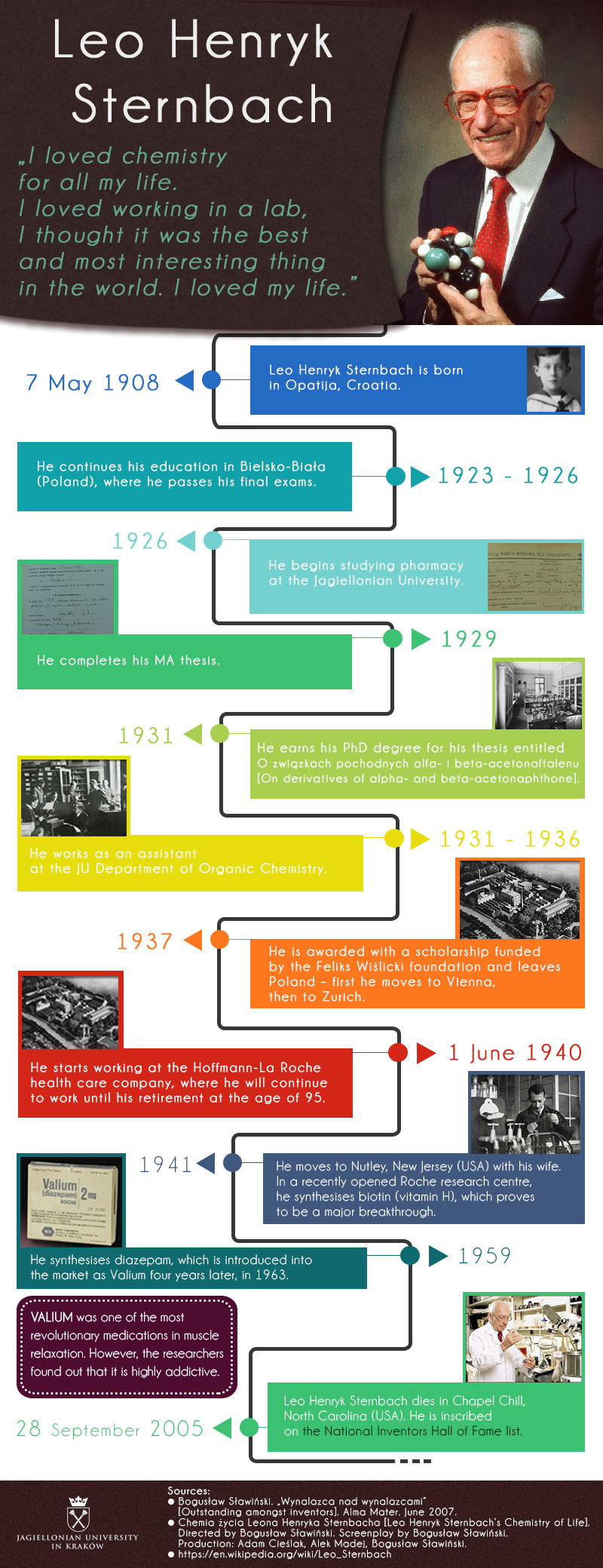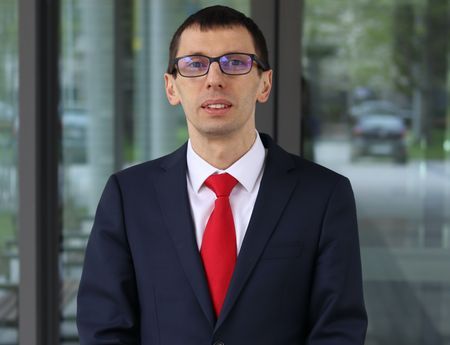
Polish American chemist and pharmacist, one of the most eminent Jagiellonian University graduates, is included in the National Inventors Hall of Fame, along with such figures as Alfred Nobel and Thomas Edison.
Leo Henryk Sternbach was born on 7 May 1908 in Opatija, Croatia, where his father, Michał Abraham Sternbach, a Kraków pharmacist who graduated from the Lviv University, has set up a chemist's shop.
The Sternbach family hailed from Drohobych and was well-known in Kraków. Michał's brother, also named Leo, was a world-class classical philologist and an expert in Byzantine studies. He was a professor of the Jagiellonian University and a member of the Polish Academy of Arts and Sciences. In 1939, he was arrested by the Nazi Germans during Sonderaktion Krakau and killed in the Sachsenhausen concentration camp. Edward Dawid Sternbach, Michał's other brother, held a PhD in law and managed a large law firm. Edward's son, Ludwik, also was a lawyer as well as an indologist. He was an employee of the Jagiellonian Universty and later a professor in Lviv, Mumbai, and Paris, and a long time member of the United Nations Trusteeship Council.
Young Leo received his education in Villach and Graz. In 1923, he came to Bielsko-Biała, where he passed his final exams. In 1926, he moved to Kraków to help his father with the chemist's shop he managed at ul. Dietla 36. Simultaneously, he began studying pharmacy at the Jagiellonian University.
 In June 1929, he received his MA degree. He continued his studies, acquiring a PhD degree in philosophy in the area of chemistry for his thesis entitled O związkach pochodnych alfa- i beta-acetonaftalenu [On derivatives of alpha- and beta-acetonaphthone]. His work was chiefly related to pigments. Due to financial reasons, he was let go in 1936 as part of a larger-scale downsizing.
In June 1929, he received his MA degree. He continued his studies, acquiring a PhD degree in philosophy in the area of chemistry for his thesis entitled O związkach pochodnych alfa- i beta-acetonaftalenu [On derivatives of alpha- and beta-acetonaphthone]. His work was chiefly related to pigments. Due to financial reasons, he was let go in 1936 as part of a larger-scale downsizing.
In 1937, Leo Sternbach was awarded with the Feliks Wiślicki Foundation scholarship. The foundation was created to help develop the Polish textile industry. Sternbach lived in Vienna, then in Zurich, continuing his research under the guidance of professor L. Ruzicky, who later received the Nobel Prize.
When World War II began, Leo Sternbach was living in Switzerland. On 1 June 1940, he started working at Hoffmann-La Roche health care company in Basel. He worked for the company until he retired in 2003, at the age of 95.
In June 1941, he moved to Nutley, New Jersey (USA) with his wife. In a recently opened Roche research centre, he synthesised biotin (vitamin H), which was a major breakthrough.
He was also the first one to synthesise benzodiazepines – chlordiazepoxide, diazepam, flurazepam, nitrazepam, clonazepam – as well as many bactericides, painkillers and antiemetics.
Diazepam, which he synthesised in 1959, was much stronger than Librium, an anxiety medication he worked on earlier. It was introduced into the market in 1963 as Valium. The name was derived from the Latin word valere – to be strong. It quickly became one the most popular medicines in the USA.
"Valium was one of the most revolutionary medications in muscle relaxation. It was chiefly designed for that purpose, but gained popularity because of its side effect – it induced a state of calm and relaxation. All benzodiazepine derivatives are still present on the market and play a significant role in chemistry. One could say that Valium was superior to all anxiety medication available to the general public in its time," said Barbara C. Slubowski, Sternbach's colleague.
In time, the researchers found out that Valium is highly addictive. Mass usage of the drug quickly slipped out of control. Doctors prescribed it excessively and without consulting a psychiatrist first. The first restrictions were introduced in the 1980s. Valium was finally withdrawn from the market in 2002. The most famous addicts include Elizabeth Taylor, Elivs Presley and Andy Warhol.
Leo Henryk Sternbach died on 28 September 2005 in Chapel Hill, North Carolina, USA.
According to US News and World Report, he was one of the 25 most influential Americans of the 20th century. On 14 May 2005, he was inscribed on the National Inventors Hall of Fame list, which includes names such as Nobel and Edison. He was also included in New Jersey Inventors Hall of Fame and Medicinal Chemistry Hall of Fame.
In the final months of his life, he received a doctoral diploma in an ornamental frame from the Jagiellonian University. He is one of the university's most eminent graduates.





